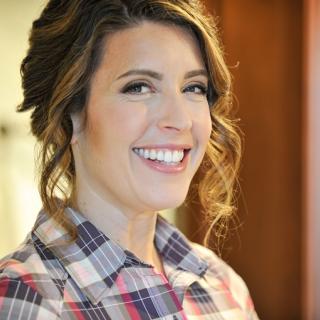Editor’s note: Last week, CNN reported on a congressional investigation led by the House Subcommittee on Economic and Consumer Policy that found four leading baby food manufacturers knowingly sold baby food that contained dangerous levels of toxic heavy metals, including arsenic, lead, cadmium and mercury. In response, we are bringing forward this guide to safely introducing solid foods and easy recipes for making your own healthy baby food. Find more information about how to avoid toxic metals in your baby’s food here.
A baby’s life is a never-ending checklist of milestones: first smile, first tooth, first steps, first words. One of the most exciting milestones for this chef-mom is first foods, of course!
There are two camps when it comes to introducing “real” food to your baby: traditional weaning (TW) and baby-led weaning (BLW). I spoke with pediatrician Linda Hung, M.D. at Allegro Pediatrics and naturopathic doctor and East Asian medicine practitioner Dr. Krystal Plonski at the Docere Center to learn more.
In general, solid food is introduced between 4 and 6 months of age. At their four-month visit, Dr. Plonski speaks with her patients’ families about the signs and developmental milestones to look for that signal the time is right to start introducing foods. Dr. Hung says to be on the lookout for your child watching you eat, looking at or grabbing at food and exhibiting good head control.
From there, Dr. Plonski says, it’s up to the parents to decide if they want “traditional weaning, baby-led weaning, or a hybrid of the two.” Dr. Hung agrees, and encourages parents to try “the method that they feel best matches their philosophy and the personality of their infant.”
So, how do you choose?
Traditional weaning
Traditional weaning (TW) starts babies with purees, cereals (sometimes mixed with breast milk or formula) and mashed foods. Think of this as the “Here comes the airplane!” method of weaning: pureed or mashed foods are placed in a spoon and fed to baby, with or without coaxing. You can start TW anytime between 4 and 6 months of age, when you feel you and your baby are ready.
Table foods are gradually introduced, “followed by increasing texture and complexity of food as [the] child progresses through certain stages,” says Dr. Plonski. Many parents are comfortable with this approach because as the name suggests, it’s traditional (a majority of us were spoon-fed purees as babies). You can start introducing foods as early as 4 months of age, and overall, it’s a (slightly!) less messy endeavor than BLW. However, some believe babies are exposed to fewer flavors and textures, which may make them pickier eaters down the road. This approach also teaches them to swallow without chewing.
Baby-led weaning
The premise of BLW is that baby eats everything, and I mean everything, that the rest of the family eats (within reason). Of course, all foods are cut in a specific way so that they are not choking hazards. By this method, babies simultaneously learn how to feed themselves, how to enjoy a variety of foods (including various textures, colors and flavors), and how to chew, then swallow, food.
“The key to this type of feeding is that if the child can pick up the food and bring it to their mouth with their hands, there is reduced chance of choking on it,” says Dr. Plonski. The benefits for parents? Baby gets to share in our mealtime. This means less food to prepare (only one meal is made for the entire family, and there’s no need to sweat behind a stovetop or blender pureeing foods) and no expensive baby food to buy. #momwin
However, unlike TW, you cannot start BLW until baby shows all signs of readiness (no matter how ready you may be feeling). This includes reaching 6 months of age, being able to sit independently for at least one minute, and losing their tongue thrust reflex. Continue breastfeeding or formula-feeding, as this will continue to be your baby’s primary nutrition source throughout the first year of their life.
One of the most important signs of readiness? That baby shows an interest in food, which, in our house, is a bad thing. No garlic-sautéed prawns, roasted broccoli florets, or lentil stew is safe in our house!
Whether you start with purees or full-on family dinners, there are several rules of the road that you should abide by when your baby starts solid foods.
Take an infant first aid and CPR class.
Gagging is a normal reflex in babies — it helps them move food away from their airways and prevents choking. Don’t think that if you are starting with purees that baby is safe from choking! Remember that little ones like to eat everything in their path, including Legos, buttons and spare change. Dr. Plonski always recommends parents take an infant CPR class prior to any food introduction. Learning how to recognize the signs of choking and how to respond is a skill every parent and caregiver should have. Find local classes by visiting the Red Cross website.
Introduce allergens.
This may sound like counter-intuitive advice, but both Dr. Hung and Dr. Plonski agree with the current research that suggests the introduction of highly allergenic foods such as peanuts, shellfish and strawberries between the ages of 6 and 11 months can actually help reduce the risk of your child developing an allergy. Note: Always consult with your pediatrician first before introducing such foods, especially if there is a family history of allergies.
Avoid the universal no-nos.
No infant should be given honey until age 1 because it may contain bacterium spores that can cause infant botulism. (Terrifying! I guess honey isn’t so “sweet” after all?)
Research also advises that parents avoid giving infants under 1 year of age whole cow’s milk in lieu of breast milk or formula. It’s difficult to digest and can cause iron-deficiency anemia and stress kidney function. Cooking with cow’s milk is okay, though, so feel free to use it in your baked goods and cooked cereals.
Give them the best seat in the house.
Invest in or borrow a good-quality highchair with a three-point harness so that baby sits safely and securely upright when learning to self-feed.
Relax.
No matter which route you take, TW or BLW, things are going to get messy! But that’s what bibs are for, so enjoy the process, be amazed at what your little person is discovering and invest in a good vacuum. (I’ve found a broom, mop and dog also help immeasurably.)
Hungry for more?Do diligent research to make sure baby is safe. Learn more about BLW, including signs of readiness, how to properly serve (and season) food, and the difference between gagging and choking by joining an online social media group like Baby-Led Weaning for Beginners, or by reading a book. Ask fellow parents questions and compare and contrast methods for TW and BLW in social media groups like Baby-Led, Combo and Traditional Weaning. You can also have healthy, organic purees and first foods fit for babies delivered right to your door through services like Yumi and Little Spoon. Chef-mom Jackie's top tips for introducing solid foods:
|
Editor’s note: This article was first published in 2019 and has been updated for 2021.











